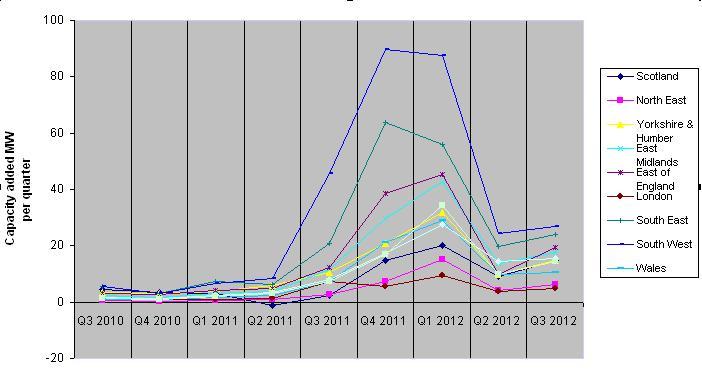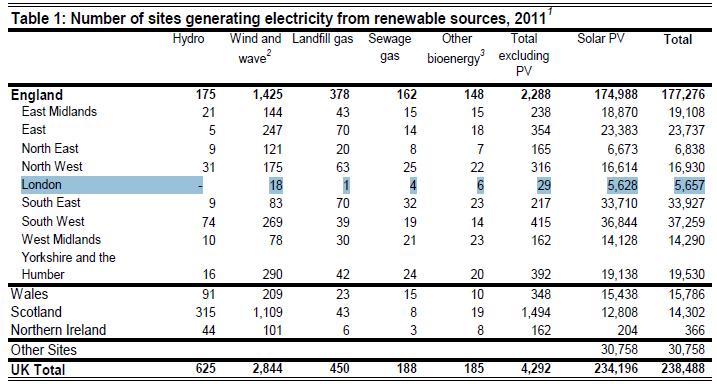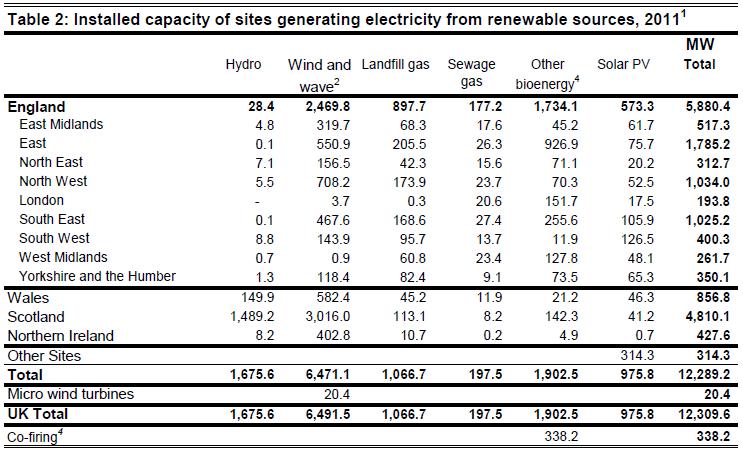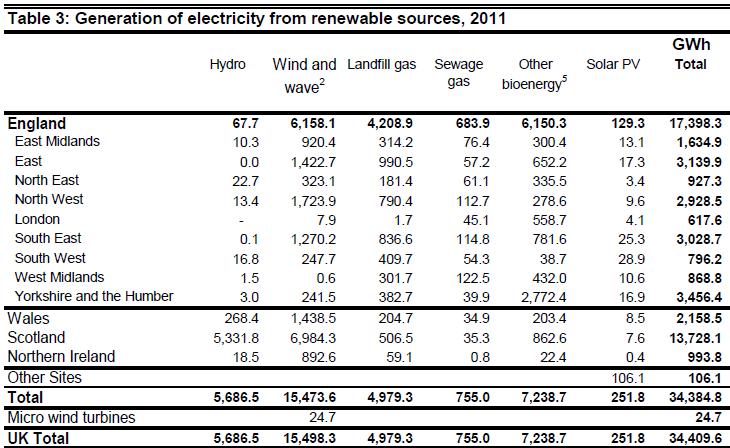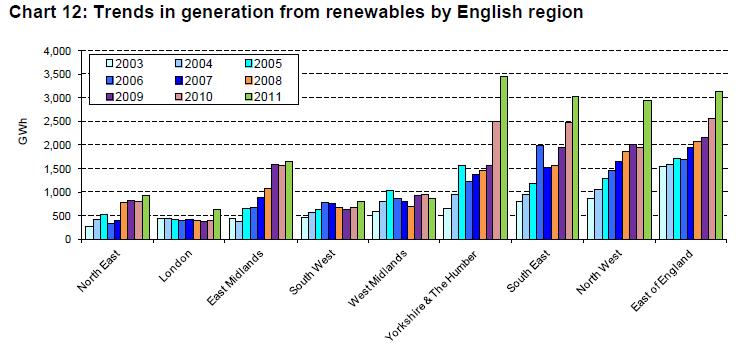Site search:
-
What’s new?
Energy for London Tags
Brent Buildings Camden Carbon Emissions CHP Cities Climate Adaptation Community Heating Community Initiatives Croydon Data DECC Decentralised Energy Distribution ECO Energy Costs Energy Efficiency Enfield FIT Fuel Poverty Funding Green Deal Hackney Haringey Housing Islington Lambeth Library Local Authorities Mayor Newham Ofgem Olympics Photovoltaics Planning RE:FIT RE:NEW Renewable Energy Retrofit Southwark Tower Hamlets Transport Waltham Forest Waste WestminsterEnergy Archives:
- February 2021 (1)
- January 2021 (15)
- December 2020 (15)
- November 2020 (9)
- October 2020 (3)
- August 2020 (5)
- July 2020 (3)
- June 2020 (4)
- April 2020 (10)
- March 2020 (5)
- February 2020 (2)
- January 2020 (3)
- October 2019 (1)
- September 2019 (4)
- August 2019 (2)
- July 2019 (1)
- August 2018 (1)
- November 2016 (8)
- October 2016 (8)
- September 2016 (2)
- August 2016 (8)
- July 2016 (14)
- April 2016 (12)
- March 2016 (16)
- February 2016 (8)
- January 2016 (4)
- December 2015 (1)
- November 2015 (1)
- October 2015 (16)
- September 2015 (3)
- June 2015 (1)
- May 2015 (1)
- April 2015 (1)
- March 2015 (1)
- February 2015 (1)
- January 2015 (1)
- December 2014 (18)
- November 2014 (4)
- August 2014 (8)
- July 2014 (7)
- June 2014 (25)
- May 2014 (8)
- April 2014 (4)
- March 2014 (12)
- February 2014 (7)
- January 2014 (13)
- December 2013 (11)
- November 2013 (15)
- October 2013 (15)
- September 2013 (18)
- August 2013 (5)
- July 2013 (20)
- June 2013 (33)
- May 2013 (8)
- April 2013 (16)
- March 2013 (25)
- February 2013 (14)
- January 2013 (20)
- December 2012 (23)
- November 2012 (23)
- October 2012 (25)
- September 2012 (14)
- July 2012 (12)
- June 2012 (43)
- May 2012 (20)
- April 2012 (8)
- March 2012 (40)
- February 2012 (39)
- January 2012 (40)
- December 2011 (22)
- November 2011 (40)
- October 2011 (33)
- September 2011 (48)
- August 2011 (40)
- July 2011 (58)
- June 2011 (41)
- May 2011 (80)
- April 2011 (38)
- March 2011 (33)
- February 2011 (25)
- January 2011 (24)
- December 2010 (3)
- November 2010 (7)
- October 2010 (6)
- September 2010 (7)
- August 2010 (1)
- July 2010 (2)
- June 2010 (4)
- May 2010 (1)
- March 2010 (3)
- February 2010 (3)
- December 2009 (5)
- November 2009 (2)
- October 2009 (3)
- July 2009 (3)
- June 2009 (1)
- April 2009 (1)
- March 2009 (1)
- February 2009 (1)
- January 2009 (1)
- December 2008 (2)
- October 2008 (1)
- September 2008 (1)
- July 2008 (1)
- March 2008 (2)
- January 2008 (2)
- October 2007 (1)
- September 2007 (3)
- July 2007 (1)
- March 2007 (1)
- February 2007 (3)
- November 2006 (3)
- August 2006 (1)
- February 2006 (1)
- May 2005 (1)
- February 2004 (1)
Renewable Energy
Comparing PV in London to other regions
January 2013: With the publication of Ofgem’s new FITs newsletter (Quarterly Report 10 – December 2012 which looks at data up to September 2012) – it’s useful to look at back at the data over the past 10 issues and see how the capital has been faring under the programme with respect to most appropriate of the FIT technologies – photovoltaics (ie PV or solar electric). It should be noted that PV makes up 98% of FIT installations and 90% of total FIT generation capacity installed (see the newsletter for full details).
Previous posts (here and here) have looked at various FIT data sets and highlighted the fact that London has had the lowest capacity of PV installed of any region.
Plotting the installation rates of PV capacity per region per quarter (as provided by data in the Ofgem newsletters) since the FIT programme started (April 2010) provides a comparison of not only how low London’s capacity is compared to other regions of the country (London is the line skirting along the bottom, just below the North-East), but also how the various regions reacted to the sudden and major change in FIT tariffs (a good summary of which is in the following Guardian article).
The majority of regions witnessed a significant’spike’ in the number of PV systems installed as a result of the Government’s announcement that there was to be an near-immediate reduction in the FIT tariff level for PV. However, in London, though there there was an increase – it was incredibly modest compared to nearly all other parts of the country. Does this reflect:
- A low level of interest in PV by Londoners?
- More renters and more flats in London reducing demand for PV?
- Perhaps only a small number of companies are offering PV in the capital?
- Less knowledge in the benefits of PV by Londoners?
- Or are PV companies more attracted to doing business outside London – ie cheaper staff, less hassle factor, easier to put up scaffolding etc etc – more installs mean more money for them?
Whatever the reason, the potential of the most appropriate of the renewable technologies for London is currently being unrealised. The GLA’s 2012 London renewable energy study estimated that PV has the technical potential to supply up to 19% of the capital’s electricity consumption.
NB More recent data – up to December 31 2012 – is available in Ofgem’s latest FIT register database of 8 January 2013 (link to the Excel spreadsheet here – it’s a big file at 39MB with around 350,000 separate entries for FIT installations across the UK). The database indicates that of the 31MW of PV capacity in London, the vast majority – around 27 MW – comes from small scale household installations.
Posted in Decentralised Energy, News, Renewable Energy
Tagged Distribution, Photovoltaics, Renewable Energy
Leave a comment
The Energy Bill misses out “opportunity to support community energy co-operatives”
January 2013: Newly elected Labour MP for Croydon North, Steve Reed, made a welcome intervention in the December parliamentary debate on the Energy Bill correctly stating that the Bill “misses an opportunity to support community energy co-operatives”. As an example of what can be achieved by such schemes, Mr Reed gave details of the Brixton Energy project:
“Brixton solar energy 1 was the country’s first urban energy generation co-operative and was set up by the local community in Brixton, working in co-operation with the local authority, Lambeth council…Brixton solar 1 was built on the roof of a social housing estate, Loughborough Park in Brixton. Brixton solar 2 is being built on another part of the same estate and a third scheme is planned for another estate in the area. The schemes are funded by community subscription and offer a 3% return to investors, most of whom are local. They are part-resourced by the local authority, which makes the buildings available.
“Instead of supporting such schemes, the Bill offers smaller community generators lower market prices for their power, making them less financially viable, and it fails to recognise the administration costs needed to run them. The Bill also ends the renewables obligation, which means that suppliers have no incentive to purchase from independent generators such as Brixton solar energy.
Mr Reed should be familiar with the scheme as, until his appointment to Parliament, he was the Leader of Lambeth Council. He goes on to conclude with some really good recommendations:
“The Bill should be amended to increase the fixed feed-in tariff threshold for community projects, guarantee a market for community energy schemes and set a minimum annual target for new generation capacity from community schemes. I should like to see local authorities incentivised to lower overall household carbon emissions in their area, which they could do in part by supporting projects such as Brixton solar energy.”
Further detail on these can be found in some excellent research by Cornwall Energy undertaken for Co-operatives UK and published a few months ago.
It should be noted that Scotland has had a target since 2011 of 500 MW community and locally-owned renewable energy by 2020 (see here for details).
Posted in News, Renewable Energy
Tagged Community Initiatives, Croydon, energy bill, Lambeth, Photovoltaics, Renewable Energy
1 Comment
FIT: Draft Guidance for Community Energy and School Installations
December 2012: Ofgem draft guidance document, open for consultation. It provides specific guidance for solar PV community energy and school installations on how to benefit from provisions available for the FIT scheme.
Further information on community energy and school installations can be found in the following DECC FIT FAQ document and the latest FIT rates here.
‘Community energy is on the up. But will the government hobble it?’
29 October 2012: Good post on the Guardian’s website about the emergence of community-led energy schemes over the past year and – worryingly – the potential negative impacts that might arise out of the Government’s forthcoming proposals for the Electricity Market Reform (EMR) in the Energy Bill on smaller scale generators. Some of these issues are picked up in a useful briefing by the Renewable Energy Association (REA) ‘ 10 actions needed to make EMR work for renewable power‘.
Posted in News, Renewable Energy
Tagged Community Initiatives, Decentralised Energy, EMR, Renewable Energy
Leave a comment
Renewable Electricity Generation in London begins to grow
1 October 2012: DECC’s latest issue of Energy Trends includes new regional statistics on renewable electricity (not energy) generation. The article – Renewable electricity in Scotland, Wales, Northern Ireland and the regions of England in 2011– highlights (in Table 1) that 5,657 renewable electricity generating sites were operating in London as at the end of 2011. Not surprisingly the vast majority of these were photovoltaics (PV) – 99.48% to be precise – with a further 58 renewable technology schemes registered (this however compares with only 16 (non-PV) schemes as registered in last year’s statistics). The number of PV installations has risen more than fivefold compared to the number (1,044) in place at the end of 2010.
More importantly in terms of capacity and output, the following two tables (copied below) reveal that in 2011:
- London has 193.8 MW of electrical generating capacity (compared to 117.1 in 2010) – a 65% increase in renewable capacity over the year.
- PV capacity has risen six fold from 2.8 MW in 2010 to 17.5 MWas at the end of 2011
- However ‘Other biomass’ has seen the biggest overall increase in capacity – just over 40MW – over the year
- Oddly no sewage gas plants were registered in the 2010 statistics (a number of schemes have been operating in the capital for sometime…); it is now reported that 4 schemes operate in London to a total generating capacity of 20.6 MW.
- The ‘Wind and Wave’ category has increased by 8 in terms of installation numbers (10 to 18), however the capacity number remains the same – 3.7 MW – as of last year.
Following the level of overall renewable capacity added, there’s been a 60% increase in the amount of renewable electricity generated, rising from 385.7 GWh (gigawatt-hours) in 2010 to 617.6 GWh in 2011 (see table below).
The article provides further analysis and comparisons of London’s output as compared to the rest of the English regions, which, as is already well documented, remains modest due to the limitations the capital has in exploiting key renewable technologies such as wind and landfill. Chart 12 in the article (copied below) however provides some cause for optimism as it illustrates that changes made to the national policy framework for renewables over the past few years- particularly with the advent of Feed in Tariffs (FITs) and Renewable Obligation (RO) Banding – is finally supporting London to take a small but positive step forward in terms of its renewable contribution, after several years of only limited progress.
Posted in News, Renewable Energy
Tagged Anaerobic Digestion, Data, Photovoltaics, Renewable Energy, Waste
Leave a comment
Update on Brixton Solar Project
1 March 2012: BusinessGreen have provided a short update on Brixton’s Repowering South London solar scheme, stating that the project has “raised £10,000 from investors towards a £75,000 target since launching a share offering earlier this month.” The full article can be read here.
Posted in News, Renewable Energy
Tagged Community Initiatives, Lambeth, Photovoltaics
Leave a comment
Westminster targets 10 housing estates for solar roll out
1 March 2012: Westminster council is planning to roll out solar panels across 10 of its estates in partnership with its ALMO CityWest Homes. Roofs on the Amberley Estate in West London is the first of the schemes to benefit and now features 114 solar panels, capable of generating up to 21.6 kilowatts of power. The £1.5 million project is funded by Westminster City Council in partnership with CityWest Homes and is set to be rolled out across ten Westminster estates by March 2012. Full details here.
Renewable Heat in London
21 February 2012: Angie Bray, MP for Central Ealing and Acton, asked the following question in Parliament on the extent of the operation of the Renewable Heat Incentive (RHI) in London:
Angie Bray: To ask the Secretary of State for Energy and Climate Change how many organisations in London have received support from the Renewable Heat Incentive to date. [94815]
Gregory Barker: None of the five installations accredited to date by Ofgem for support from the Renewable Heat Incentive scheme are based in London. Payments under the scheme will be made on a quarterly basis following submission of eligible heat usage data. We expect to make the first payments in March.
The RHI tariffs are paid for 20 years to eligible technologies with payments being made for each unit (kWh) of renewable heat which is produced. The second phase of the RHI scheme will see it expanded to include more technologies as well as support for households. Further information is posted on the DECC website.
The RHI is to be introduced in two phases. The scheme opened for non-domestic applications on 28 November 2011 and, as the answer outlines, only a few schemes have been accredited to date, none of which are in London.
In the interim to Phase 2 being launched, the Government also introduced a grant funding programme, the Renewable Heat Premium Payment scheme, which will run from 1st August 2011 to 31st March 2012. As detailed previously (here and here), the grants will be focused on ‘non-gas grid’ sites, and hence London will miss out on receiving any support for the installation of technologies such as heat pumps, solar thermal panels and biomass boilers.
The RHPP is managed by the Energy Saving Trust (EST) who produce weekly statistics on the grants given out. Disappointingly they do not provide detail of the grants given out by county or local authority, only by country. The latest (15 February) statistics can be seen here. It’s interesting to note that with just over a month of the scheme still to go, only £3.9m of the £15m RHPP funds appear to be allocated.
Largest solar scheme on social housing in London
January 2012: Ascham Homes’ and Waltham Forest are working together to install solar PV on 1,000 homes by March 2012 to create the largest solar scheme on social housing in London. Tenants in homes with the solar PV scheme installed can use the electricity being generated from their system for free. Read the full news release here.
The Hydrograph
January 2012: Community-led renewable energy scheme in Richmond, Ham Hydro, has recently published its first newsletter providing an update on their project, which involves the installation of hydro power turbines on the River Thames at Teddington Weir. Down The Hydrograph at www.hamhydro.org. Further information is available on the Ham Hydro energyshare webpage.
Posted in News, Renewable Energy
Tagged Community Initiatives, Renewable Energy, Richmond
Leave a comment
London Loses out on Renewable Heat Grants (Part 2)
17 November 2011: DECC announced today “The 24 successful applicants [who] will receive up to £175,000 to install green heating systems such as biomass boilers, solar hot water panels and heat pumps in the homes of tenants. Successful bidders included projects across the whole of Great Britain…” except in London. This is because – as highlighted in a previous post – the Renewable Heat Premium Payments are directed to households not on the gas grid.
Posted in News, Renewable Energy
Tagged Funding, Renewable Energy, Renewable Heat Incentive, RHI
Leave a comment


